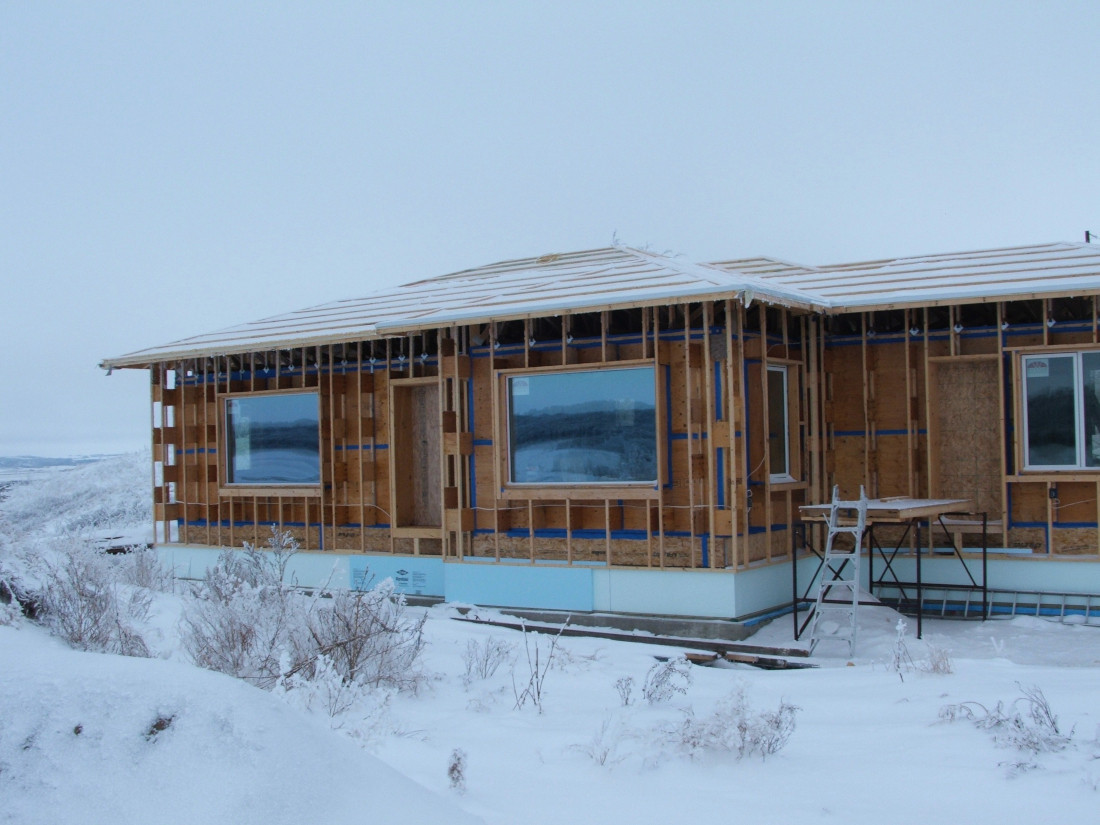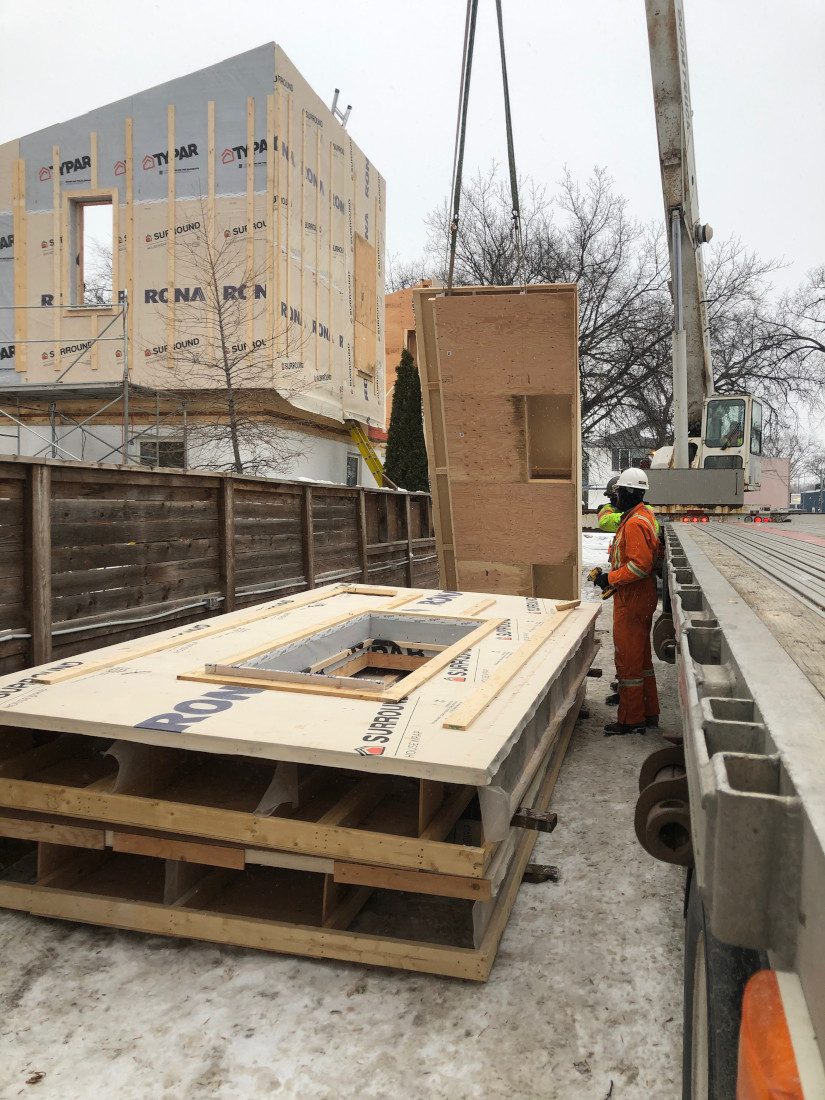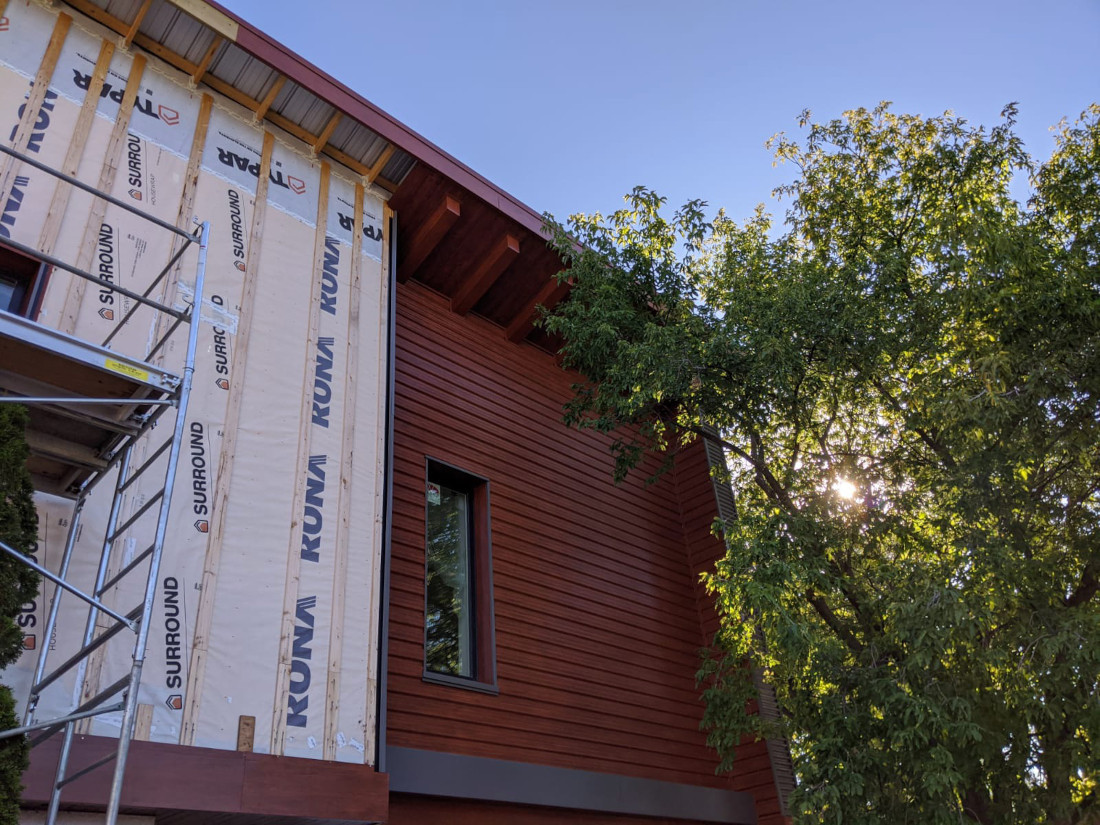Return to the earth(ship)
Kim Chase has lived in many homes, but none as unique as her current residence. The sustainable house is mostly buried into the ground.
In October 2020, Chase moved into the Earthship house, which was built in 2013. Located about an hour from Winnipeg in the rural municipality of St. Andrews, the distinct house took two years to build with the help of volunteers.
Nicole Bennett, the original owner, and her husband Chris Plantz built the Earthship home and helped Chase transition into the unusual dwelling, demonstrating the house’s operation.
There are many reasons to build greener houses, and key is the use of recyclable materials to help reduce carbon emissions.
Research shows that a greater percentage of carbon emissions come from the manufacturing of construction materials than the amount of emissions in the operation of a building.
There is a benefit to low-income residents living in energy-efficient buildings, giving incentive to harmonize sustainable and affordable housing. As heating costs rise, there is a cost-effectiveness to using renewable energy and building airtight, well-ventilated homes.
The increasing cost of heating homes for vulnerable citizens creates an urgency to retrofit older units and support new builds to meet high performance standards in terms of energy efficiency.
Evan Proven, owner of Sun Certified Builders (Supplied photo)
Home to Earthship
The construction of an Earthship is dramatically different from a traditional North American house.
“The south wall is all glass. The (other walls) are all earth-filled tires. Those are completely landscaped into the wall and up to the roof. On the inside, that is sort of concrete and plastered over, so you don’t see the tires,” Chase says.
The house is heated by solar gain. The sun hits the south-facing window and walls to increase the temperature inside.
The birth of the Earthship house is attributed to American architect Michael Reynolds around 1969. Based in New Mexico and fresh out of architecture school, Reynolds created the first Earthship home. His concerns surrounding a lack of affordable housing and sprawling landfills inspired the project.
The first Earthship houses were constructed with walls made from discarded steel or unflattened tin cans. This earlier prototype using “garbage” garnered public attention at the time. Today’s Earthship models are more complex in design, although they still use “garbage” (recycled tires).
Harmonizing sustainable and affordable
Sun Certified Builders specializes in high-performance housing. (Supplied photo)
“Research is showing that the majority of emissions from building construction are in the manufacturing of the materials that are used. We go a step further and incorporate organic materials, which sequester carbon in the building over its lifetime,” Proven says.
Earthship homes are built into the earth and use the natural heat from inside the ground to buffer the building from the external temperature. The use of recycled building materials helps assuage carbon emissions.
Manitoba’s extreme temperatures make for a challenging building climate. Insulation is crucial to protecting solar-powered buildings from overheating in the summer and being too cold in the winter.
“Instead of investing money in slightly more efficient heating systems, we’re investing our money in insulation,” Proven says.
Earthships are designed to buffer the building from the elements outside. However, Proven says such homes typically don’t incorporate an adequate amount of insulation into their construction to compensate for colder climates in Manitoba.
Building into the ground in Manitoba is not appropriate, as Proven says we have an average ground temperature of about 5ºC.
“In Manitoba, when doing a Greener Homes Grant assessment, for instance, the first areas to address are the attic and the basement. The cold temperature year-round creates an issue of heat loss from the building,” Proven says.
Earthship homes use tires packed full of earth, which form a solid wall of dirt. During the daytime, the heat slowly works its way through that layer of dirt.
This system works well in warmer climates, but in Manitoba, the ambient night temperature outside cools off significantly, offsetting any heat gained during the shorter winter days.
“By the time the heat moves through and the cool from nighttime moves through the walls at the same rate, it’s daytime again, and you have a cool mass of earth around the exterior of the house,” Proven says.
Jino Distasio is a geography professor at the University of Winnipeg. His research focuses in part on housing issues.
“There’s two parts to (sustainable housing). For new construction, we want to have significant support in place to create the best-possible housing that is affordable and sustainable. We need, increasingly, retrofit programs to support existing homeowners to make their properties much more efficient than they are now,” Distasio says. “
Think of right now, with energy costs going through the roof and having a city with a large number of homes that are in excess of 100 years (old). Home heating costs will put an increasing number of households in a difficult predicament,” Distasio says.
From construction to innovation
Laura Tyler is the executive director of Sustainable Building Manitoba. (Supplied photo)
“If a forest has been clear-cut, or you are using old-growth for wood, that is more ecologically damaging than more environmentally friendly harvested wood,” Tyler says. “Also, construction can result in a lot of waste.”
Construction, renovation and demolition account for 12 per cent of all solid waste generated in Canada, according to Statistics Canada.
According to a video provided by Sustainable Building Manitoba, a circular economy would offset environmental waste generated by the construction industry.
A circular economy is described by the Canadian government as an “economy which retains and recovers as much value as possible from resources by reusing, repairing, refurbishing, remanufacturing, repurposing or recycling products and materials.”
Proven says an obstacle to building sustainable housing in Manitoba is the difficulty often encountered when acquiring permits. The delay is due to a lack of specialized knowledge that hinders the administrative process.
“There are usually challenges (to) securing permits for the construction of off-grid or energy-efficient buildings. Vancouver overcame that difficulty by assigning a specific person with the required expertise to process special types of building permits,” Tyler says.
Proven agrees that Manitoba lags behind other jurisdictions, impeding the construction of sustainable homes.
“We’re behind the pack in Canada in terms of adopting national building codes. Manitoba still uses 2010-2011 national building codes. Other jurisdictions like B.C. have actually adopted the passive-house standard as their minimum building code,” Proven says.
A passive house is a building standard that is simultaneously energy-efficient, comfortable, affordable and ecological. This is achieved through airtight insulation and a ventilation system with high-efficiency heat recovery.
Hybrid solutions
Chase encountered adjustments to living in the unique home early on, as well as when COVID-19 hit. The learning curve involved using various systems efficiently.
“It doesn’t work like a regular house, so you have to learn about batteries and pumps (that) need replacing or fixing,” Chase says.
The hot-water system in the house was too large to be supported by solar power. With the help of friends, Chase installed two small point-of-use water heaters, which hold six gallons each. Both are on their own breaker and used separately, so as not to overload the system.
“That is enough hot water so that I can have a lovely shower. I usually just boil water for my dishes,” Chase says.
When needed during shorter days in winter, Chase taps into the electricity that comes from an old barn on the property to heat her Earthship.
“You do need to supplement that in some way, shape or form. I started off with a generator but had to fill the propane tanks regularly,” Chase says.
Manitoba’s extreme temperatures remain an important factor when retrofitting or building new homes. Distasio expresses his concern on the impact of these temperature shifts on vulnerable citizens.
“Not only do we need to manage an increasing number of -30ºC days, but, likely, we will need to manage a growing number of 30ºC days. Both extreme heat and cold can have devastating effects on populations that can’t afford new technologies or heating/cooling systems to be able to survive,” Distasio says.
The Earthship home continues to be a viable and current idea. A recent post on the Manitoba Earthship Facebook page advertises an offer to sell land (143.5 acres) for the purpose of building an Earthship home.
Newer Earthship homes include modifications which are an improvement on solar power efficiency in comparison to earlier Earthship models built within the province.
Chase had been contemplating living in an Earthship home for years. Now that she has taken the plunge, she doesn’t regret living off the grid “at all. It’s a beautiful home, aesthetically,” she says.
For more information on building a sustainable home, visit Sustainable Building Manitoba at sustainablebuildingmanitoba.ca, Sun Certified Builders at suncertifiedbuilders.com or Earthship Manitoba at @manitobaearthship on Facebook.
Published in Volume 76, Number 22 of The Uniter (March 23, 2022)









